Encouraging English (or any another language) in children
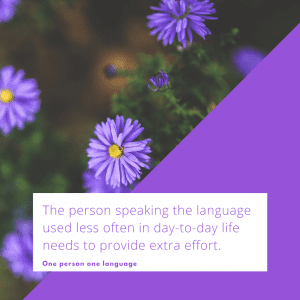
Raising children in a bilingual environment requires parents to be somewhat cognizant of language development. There are simple and fun ways to encourage bilingualism in our children. Parenting includes giving children values, gestures and cultural communication habits and expressions. We can educate our children to be bilingual by surrounding them, as often as possible, with our linguistic experience. An important principle is “one language one person.” Children will associate a language with the person who speaks it. One individual who consistently and exclusively addresses the child in a language will become linked with that language. This helps the child navigate neurologically amid any number of languages she might hear. In a mixed-language environment, the person speaking the language less often used in day-to-day life needs to provide extra effort. In this note you can read about comprehending (listening) and expressing (speaking).
Listening
Listening is the primary and passive way to acquire a language. It is easy and non-threatening because the child remains silent while absorbing language from a constant caregiver. When we talk to our children, we name things, give them directions, sing together, make observations about the world. They listen to our stories and they overhear our conversations. No recorded, written or electronic material can replace the learning relationship established through a regular, continual communication contact with a loved one.
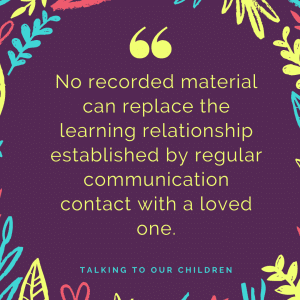
Because listening is the major means of transmitting language, we should consciously include expanded vocabulary and more complicated sentence structures as the child develops. The messages can mature with the child. As parents, we are their primary interlocutors during the formative language-learning age (approximately up to 5 years old). By making the effort to translate or explain when necessary, by adding “This is how you say it in English,” we provide the child with vocabulary elements, syntax models and tonic phrase patterns: new words, sentence structure, and intonation. Young children rarely balk at listening as a first step to language learning. Listening encourages participation and interaction for them to respond in conversation.
Speaking
Speaking demands more active participation from children. Some children speak with more ease and frequency than others and at different ages. Kids will answer our questions in the simplest language for them to use, and this will probably be the language they use daily or a mixture of the languages they are familiar with. Children will mix languages and make errors with insignificant effects on their future competency.
All children react individually. As they get older and more self-conscious, some children may hesitate to produce and perform. Forcing them to answer in English may add an artificial or negative emotional challenge. Insisting on a particular language may lead to a power struggle, which could be counterproductive and might create undesirable behavior. Continue addressing the child in English. You can ignore the language they reply with. Their experience needs to remain positive, not coercive. Congratulate your child when they respond in English.
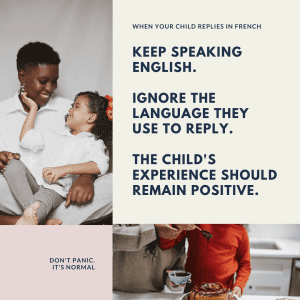
Language acquisition is cumulative but not a regular linear process. Long latent periods may be followed by spurts of high activity and integration. “Errors” are not necessarily representative of failure to learn. Example: When a child says “He goed home” she demonstrates her acquisition of the general rule for past tense conjugation, and her lack of only one irregular verb form “went.”
Tactics towards bilingualism
At an early age, begin finger plays and singing games encouraging your child to sing along. There are many websites to remind you of your favorite early childhood games. Work into call and response and movements as you play together.
Younger children will often react to a variety of verbal provocations from toys or dolls used as puppets. An English-speaking plaything or cuddle-animal can engage your child in conversation. (You provide the voice and movement, of course, wiggling the head while it speaks, leaning its ear towards the child when an answer is expected.) If the child answers in French, adapt to English “What did you say?” without comment or hesitation. AAWE members report good results from using a stuffed animal who only understands and speaks English used in this fashion.
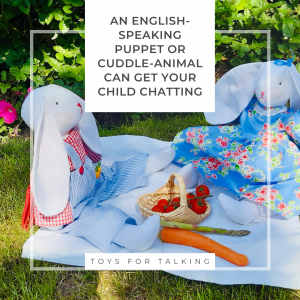
Discuss stories and books with your kids: “Who is this story about?” “What do you think will happen next?” Even though the child’s English may not be perfect, continue soliciting their interaction. Do you enjoy telling stories? Make up stories together. Adapt known stories in a manner the child might appreciate: Astronaut Goldilocks and the 3 Space Aliens or Grizzlylocks and the 3 Teddy Bears. Make up stories using Playmobil or figurines as characters, letting the characters talk to each other in English as you and the child play together. Make up stories about what you see in the street “Who do you think lives in that old house?” “Where do you think the truck is going?”
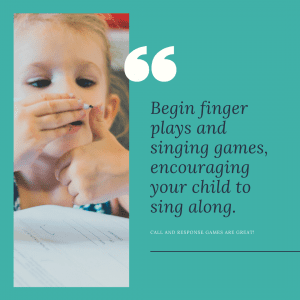
Some of these tactics will be more or less suitable for you and your child. AAWE friends and children’s activities can help support an English language environment. Whether or not your child is speaking in English, you will want to read to them in English. We will discuss Reading in the next installment.
Janine Brimbal
Ms. Brimbal found an early connection to linguistics and non-verbal communication. Love of great literature qualified her as a Title I resource teacher. While clowning around the nation’s capital disguised as a bear or the tap-dancing-Empire-State-Building, she taught drama at the Smithsonian Institution and participated in performing arts educational research and training projects. She used Contact Improvisation to develop Wheelchair Dance with adults, and is proud to have participated in the passing of the Americans With Disabilities Act and directed a project to assist in the integration of children with disabilities.
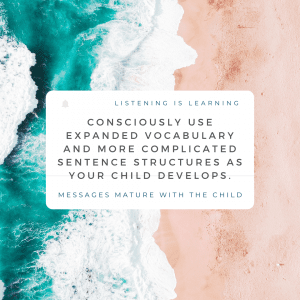
Fortuitously performing at the Alternative Theatre Festival in Nancy, she found herself in France, and the food convinced her to stay. She directed a local lycée theatre group for 17 years and has published articles on drama and disability in a number of international publications. Currently retired and the mother and grandmother of brilliant researchers, Janine is thrilled to contribute to AAWE in any way.










Thanks for this informative post! Any suggestions on where to go for further reading and additional resources for encouraging bilingualism in children?
Here’s a quick handbook from the Linguistic Society of America:
https://www.linguisticsociety.org/sites/default/files/Bilingual_Child.pdf
For a pretty recent (2013) summary of the science around bilingualism, check out this free article, aimed at parents and professionals who work with bilingual kids:
https://www.ncbi.nlm.nih.gov/pmc/articles/PMC6168212/
If you’re looking for a book, here are a few good options:
Bilingual: Life and Reality – François Grosjean
This one is good for an overall understanding of bilingualism. One interesting topic it discusses is the variance in language balance – one language being more or less dominant – and shifting dominance in languages over a lifetime, and how this is all normal.
The bilingual edge: Why, when, and how to teach your child a second language – Kendall King, Alison Mackey
This one is a good introduction to raising bilingual kids, with practical tips based on scientific research. It may be a bit biased toward those living in the US.
The bilingual family: A handbook for parents – Edith Harding-Esch & Philip Riley
This book also tends to the academic side with less practical information, but I’d recommended it here because it co-written by authors in the UK and France.
The simplest response is : listen and speak with your child. I see parents talking on their phones while walking with their kids and at the playground. I don’t condemn this but reinforce their role as language stimulator.
I definitely identify listening on the part of the parent as the most important, with
a constant effort to redo the content of your child’s speech in English.
Another fun thing I remember was teaching my kids the songs my father used to sing with us as we drove from the Pittsburgh Pennsylvania area to Deep Creek Lake in neighboring Maryland: I Been Workin’ on the Railroad, I’m Forever Blowing Bubbles. Those songs were great ice breakers when I went for the third time with my son to the states when he was 3.
Thanks Kathy for this reminder of amusing ways of prolonging family ‘traditions’.
Singing songs with our kids can be an inconspicuous way to reinforce language and introduce family history.
thanks for this wonderful and informative article. I was going to post a question on the AAWE Facebook group: I remember reading a few times in the past that there is a ballpark percentage of how much your child/ student should speak/listen/read the new language if they want to be moderately or fully bilingual, especially when they are young. Do you have this information? For example, I try to stress to the families I work for that one hour a week with me is not going to get their French kids to be bilingual. I give them suggestions for movies and books on audio that the kids should/could be listening to, but they don’t follow – even though they are totally into wanting their children’s spoken English with me to be “better” than what they will get at their French school. Their time with me is better because I do all kinds of creative play with them and I follow their interests with articles, story telling, etc. However, it is still not enough of an investment on the part of their parents to leave the language instruction for that one hour and whatever happens at their French school. And, some of these parents speak English really well. This fall, I am going to give them the “statistics”, generally speaking, and let them know what that “exposure” needs to look like if they want better results… without pressuring their kids too much. Can you help me find an article that speaks specifically about acquisition and exposure necessary for ESL kids? Thanks so much. <3
Hi Helen, It sounds like you are giving the parents really good information. There are probably many useful articles out there, but here is one you might find interesting: https://www.researchgate.net/publication/241649304_The_relationship_between_bilingual_exposure_and_vocabulary_development
Thanks Anjali. Very interesting article.
Helen,
Good luck convincing parents to spend more time on Language learning. I understand they are busy and often outsource the chore of language. I think you (or they) also need to consider the child’s best mode of information intake (reading /listening/engaged playing with movement). Each child’s predisposition may be more significant than the ‘easiest’ choice for the parent between ‘reading, films, recordings, play groups’.
Hi Janine, Thanks for your tips and advice.